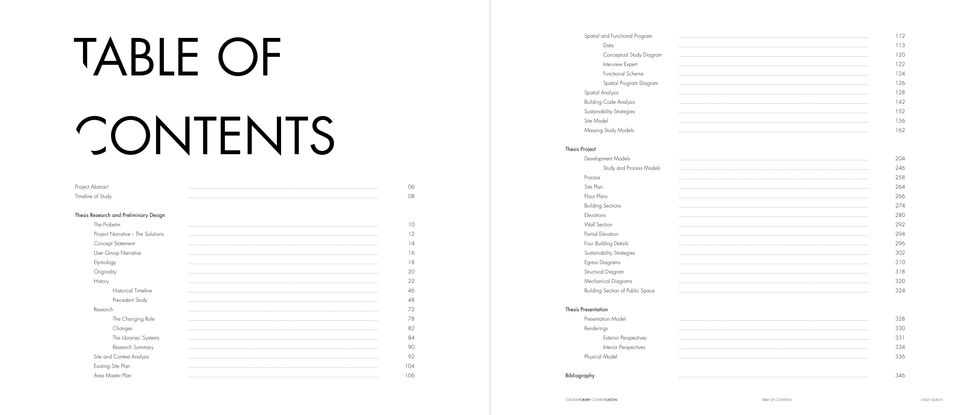
THESIS PROJECT
PROJECT ABSTRACT
Libraries started to become available and popular with the general public only in latter part of the previous millennium. Before that, collections of books primarily were only available to those who had their own private libraries, ie, the most wealthy families. While libraries have done their best to keep up with the increasing rate of technological change, eg, digitizing their card catalog systems and incorporating computers for public use, the pace of change, it seems, is moving so quickly that it is unlikely that libraries will be able to keep up. The idea that a library’s primary function should be as a repository for books is antiquated at best. In contemporary times, all books are being digitized. Printing books is not only a strain on the natural resources that it takes to physically produce the book (ie, the materials that go into making a book), but also it’s not economical with respect to the labor, shipping, and storing costs. (Not to mention, physical books have a limited shelf life.)
THE PROBLEM
A place that facilitates learning is what a library has been in the past and should contin- ue to be in the future. It is clear that for a library to meet theses needs, it has to be more than just a repository for books. So, what should a library’s primary function be moving forward?
PROJECT NARRATIVE -- THE SOLUTIONS
A library should be a place where learning occurs. In this way, a library is staying true to the purpose that it has always served, but the question is, how does it continue to serve this purpose? My library is going to tackle this issue through two distinct angles.
One: the library will facilitate conversations, and thereby learning, through the use of many small rooms where people can sign up to have talks with each other on a myriad of topics. I believe that in-person conversations are critical for spreading knowledge. Many conversations (really, interactions) happen over social media every day, but I do not believe that learning is happening in the vast majority of these instances. When you are able to meet face-to-face with a person and discuss something that you both have an interest in, the propensity for learning is at its maximum. There are so many cues that just can’t be expressed over text, eg, tone of voice and body language. By having many rooms and encouraging people to sign up for conversations, we will not only facilitate the spread of knowledge but we will build a sense of community as well.
Two: leverage augmented reality to allow people to experience places that they may have only read about in novels from the past. What if you could go to your local library and visit a room that transported you back to Paris on the 14th of July, 1789, when the Bastille was stormed during the French Revolution? Or maybe, you would like to visit The First War between the Scottish and English which occurred in 1296? What if you could go to your library, put on an augmented-reality headset and walk through rooms that were composed in a way to help you understand what it was really like to be at that place in that time? The smells, the sights, the touch. I believe that having large rooms that were able to be rotated between different augmented experiences throughout history, would not only do a lot to increase learning, but I imagine that it would increase societal interest in the library itself.
CONCEPT STATEMENT
A place where knowledge is kept, but thoughts are changed.
A place where knowledge is spread, and experience is gained.
























